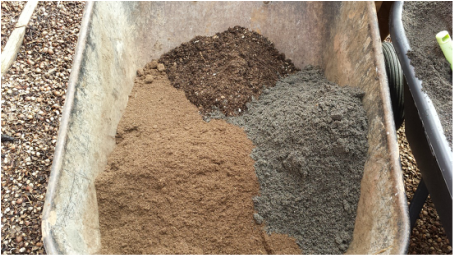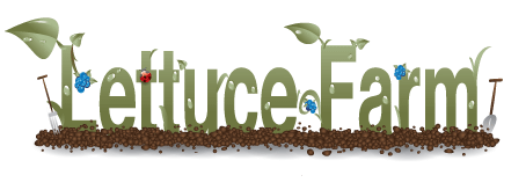Finding natural ways to feed my veggie garden is just as important to me as growing my own food. Why use harsh chemicals to fertilizer my crops.
Natural Nitrogen
Blood meal is a nitrogen amendment that you can add to your garden. Adding blood meal to garden soil will help raise the level of nitrogen and will help plants to grow more lush and green. The nitrogen in blood meal can also help raise the acid level of your soil, which is beneficial to some kinds of plants that prefer soils with low pH (acidic soil).
Natural Phosphorous
Bone meal fertilizer is used to increase phosphorus in the garden. Most bone meal has a NPK of 3-15-0. Phosphorus is essential for plants in order for them to flower. Bone meal phosphorus is easy for plants to take up. Using bone meal will help your flowering plants, like roses or bulbs, grow bigger and more plentiful flowers.
Before adding bone meal for plants to your garden, have your soil tested. The effectiveness of bone meal phosphorus drops significantly if the pH of the soil is above 7. If you find that your soil has a pH higher than 7, correct your soil’s pH first before adding bone meal, otherwise the bone meal will not work.
Before adding bone meal for plants to your garden, have your soil tested. The effectiveness of bone meal phosphorus drops significantly if the pH of the soil is above 7. If you find that your soil has a pH higher than 7, correct your soil’s pH first before adding bone meal, otherwise the bone meal will not work.
Natural Potassium
The link between potassium and plants is clear in the promotion of bigger fruit and vegetable yields, more abundant flowers and increased plant health. Add wood ash to your compost heap to increase the potassium content. You can also use manure, which has a small percentage of potassium and is relatively easy on plant roots. Kelp and greensand are also good sources for potash.
The addition of potash in soil is crucial where the pH is alkaline. Potash fertilizer increases the pH in soil so should not be used on acid loving plants such as hydrangea, azalea and rhododendron. Excess potash can cause problems for plants that prefer acidic or balanced pH soils. It is wise to do a soil test to see if your soil is deficient in potassium before using potash in the garden.
The addition of potash in soil is crucial where the pH is alkaline. Potash fertilizer increases the pH in soil so should not be used on acid loving plants such as hydrangea, azalea and rhododendron. Excess potash can cause problems for plants that prefer acidic or balanced pH soils. It is wise to do a soil test to see if your soil is deficient in potassium before using potash in the garden.
How to make your soil more acidic
 Peat Moss, Sand, Potting Soil 1/3 of each
Peat Moss, Sand, Potting Soil 1/3 of each
If your plants aren’t growing in your soil conditions because of too much alkalinity, then it may be necessary for you to learn more about how to raise acid level in soil pH.
One of the easiest ways to make soil more acidic is to add sphagnum peat moss. This works especially well in small garden areas. Simply add an inch or two of peat to the topsoil in and around plants, or during planting.
For another quick fix, water plants several times with a solution of 2 tablespoons vinegar to a gallon of water. This is a great way to adjust pH in container plants.
Acidifying fertilizers can also be used to help raise acidity levels. Look for fertilizer containing ammonium nitrate, ammonium sulfate, or sulfur-coated urea. Both ammonium sulfate and sulfur-coated urea are good choices for making soil acidic. However, ammonium sulfate is strong and can easily burn plants if not used carefully. For this reason, you should always read and follow label instructions carefully.
Sulfur is slow acting, taking several months and more commonly used by large-scale growers rather than the home gardener. Granular sulfur is deemed safe and cost effective for smaller garden areas, with applications of no more than 2 pounds per 100 square feet.
One of the easiest ways to make soil more acidic is to add sphagnum peat moss. This works especially well in small garden areas. Simply add an inch or two of peat to the topsoil in and around plants, or during planting.
For another quick fix, water plants several times with a solution of 2 tablespoons vinegar to a gallon of water. This is a great way to adjust pH in container plants.
Acidifying fertilizers can also be used to help raise acidity levels. Look for fertilizer containing ammonium nitrate, ammonium sulfate, or sulfur-coated urea. Both ammonium sulfate and sulfur-coated urea are good choices for making soil acidic. However, ammonium sulfate is strong and can easily burn plants if not used carefully. For this reason, you should always read and follow label instructions carefully.
Sulfur is slow acting, taking several months and more commonly used by large-scale growers rather than the home gardener. Granular sulfur is deemed safe and cost effective for smaller garden areas, with applications of no more than 2 pounds per 100 square feet.
The Three Bin Composter
| compostbinconstructionplan-threebin_(1).pdf |
How To Compost Brought To You By: ThePrepperProject.com


